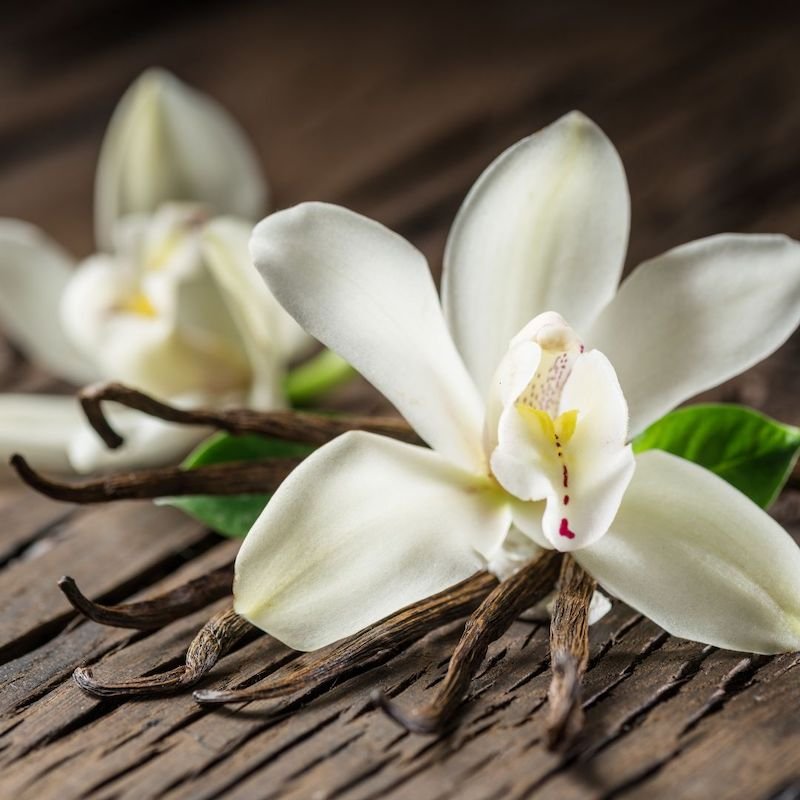Vanilla in Perfumery
The Origins of Vanilla
Vanilla, extracted from the orchids of the genus Vanilla, primarily Vanilla planifolia, has a rich history that traces back to Mesoamerica. The Totonac people of Mexico were the first known cultivators of the vanilla vine, using it not only for flavoring but also for medicinal and ritualistic purposes. Following their conquest, the Aztecs adopted vanilla, incorporating it into their sacred beverage, xocoatl, a mixture of cocoa and spices consumed by nobility and warriors.
Spanish conquistadors brought vanilla to Europe in the 16th century, where it quickly gained popularity as an exotic and luxurious ingredient. Despite its widespread appeal, vanilla remained a rare commodity for centuries due to the plant's unique pollination requirements. In its native environment, vanilla orchids relied on specific bee species for pollination. However, when cultivation spread to regions like Madagascar, Réunion, and Tahiti, farmers had to develop manual pollination techniques, a practice still used today.
Vanilla Extraction
Extracting vanilla essence is a labor-intensive process that demands patience and precision. After pollination, the vanilla pods take several months to mature before being harvested. Once picked, they undergo a meticulous curing process that includes blanching, sweating, drying, and conditioning, which can last several months. This curing process is essential for developing the complex, rich aroma associated with natural vanilla.
Vanilla in Perfumery: A Scent of Comfort and Complexity
Vanilla is one of the most appreciated and widely used ingredients in perfumery. Its warm, sweet, and slightly spicy profile makes it a staple in many compositions. Beyond its inherent richness, vanilla serves as a fixative, helping other fragrance notes last longer on the skin. It seamlessly blends with florals, woods, resins, and spices, creating perfumes that range from gourmand and oriental to sophisticated woody blends.
The Chemistry of Vanilla
The main component of vanilla's aroma is vanillin, responsible for its distinctive sweet and creamy scent. However, natural vanilla extract contains various compounds, contributing to its complexity and depth. This complexity cannot be fully replicated by synthetic vanillin, which is why high-quality perfumes often use natural vanilla despite its higher cost.
Uses of Vanilla in Perfumery
Vanilla plays multiple roles in perfumery, adapting effortlessly to different compositions. Some of its primary uses include:
As a Base Note: Vanilla provides a long-lasting, warm, and sweet foundation that anchors other fragrance elements.
To Add Warmth and Depth: Even when used in small amounts, vanilla enhances a perfume’s roundness and longevity.
To Create Gourmand Scents: Many modern fragrances rely on vanilla to offer comfort and nostalgia.
As a Balancing Element: Vanilla smooths out sharper notes, making a fragrance more harmonious and well-rounded.
Vanilla, though often considered a simple note, is instrumental in crafting the perfect scent. Its ability to add warmth, richness, and longevity makes it indispensable to perfumers. For example, in Habibi, Come to Dubai, vanilla’s creamy sweetness enhances the fragrance’s musky and woody facets, adding an irresistible style that perfectly represents the spirit of Dubai.
Whether used as a supporting note or as the star of the composition, vanilla continues to be one of the most prized ingredients in perfumery, shaping scents that evoke warmth, elegance, and timeless appeal.


